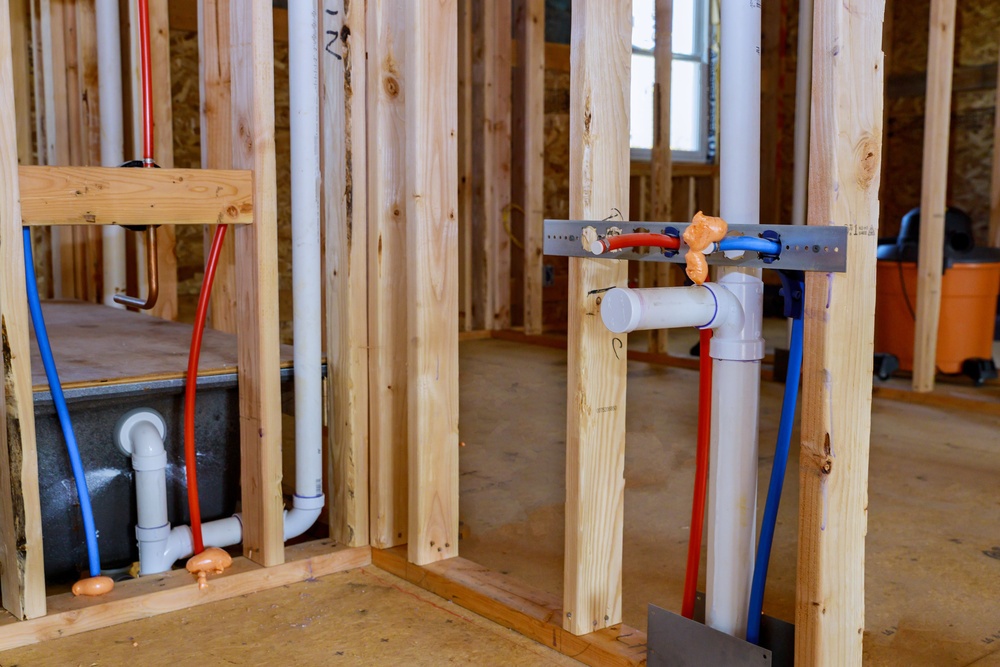The process of constructing a brand-new house can be both wonderful and stressful. There is a lot to consider while building a house, from the design to the color schemes. However, you must maintain participation in the construction progress. It is significant for any parts of the house that are inaccessible and worked on without structural changes. One such component is plumbing.
The first few moments of preparation are the most crucial. A faulty plumbing system can cause severe problems down the road. All possible hazards must be addressed, from clogged drains to flooding. In this article, we'll go over some of the main things to consider when you are at the stage where you're planning and installing plumbing for a new house. You may also want to educate yourself with other helpful tips regarding designing a new home.
- Carefully Plan Everything
When designing a plumbing system plan, thinking about the immediate and distant future is essential. It means you'll need to determine where your sewer, water line, and drain lines go. If you want to save money on plumbing repairs in the long run, it's best to take care of all your current and future water demands now while you still have easy access to the necessary plumbing.
Prioritize safety equipment and permits at the start. Obtaining permits can be time-consuming, but they're vital in building a safe home. Safety is crucial, so seek a permit so professionals may inspect for plumbing design issues and prevent future pipe breakdowns.
Since we’re on the topic of professionals, if you are situated around the New South Wales area in Australia, then you may also consider Sydney's Maintenance Plumber for more structured and expert advice.
- Centralize Your Plumbing Structure
To make future maintenance and repairs to a plumbing system less complicated, installing all necessary components in the same area is essential.
The basement is the typical location for a plumbing system because it's least likely to be seen by guests. You can also include a dedicated separate room if you are financially capable. If you are on a tight budget, make sure they are installed on the first floor, in a utility closet, if there isn't room in the basement.
- Install Multiple Shut-Off Valves
Any damaged system component should be able to utilize a shut-off valve to isolate it from the main water supply. Each sink should include a hot and cold water shut-off valve. Shut-off valves for the toilet, shower, and tub should be easily accessible.
Ensure the water main shut-off valve is installed conveniently by the water company or your plumbing services agency when they install the connection to the water main. In a plumbing emergency, you shouldn't put the main water shut-off valve in the crawl space but in the garage. Educating yourself about the other types of valves may also give you a better option for dealing with different parts of the house.

- Consider Using A Wet Wall
A 'Wet Wall' is the wall side with plumbing fixtures such as pipes, vents, and drains. Having multiple rooms share a common wet wall can save time and money. Overall, less money and time will be required for the plumbing side of things.
The solution is to connect the kitchen, bathroom, and laundry areas utilizing a common wall. Wet walls require special equipment and different materials than regular ones. Minimizing the number of damp walls will reduce the total amount of money spent.
- Focus On The Three Water Reliant Areas
Plan your plumbing system to incorporate all areas that need running water. The kitchen, bathrooms, and laundry room are the most crucial.
Kitchen
It's essential to consider the kitchen's appliances while planning the layout. If you have a dishwasher and a sink, you need water lines. A kitchen island with a sink installed in the future may necessitate the addition of a plumbing line, so plan for any potential plumbing demands.
Bathroom
Ideally, each restroom would be assessed separately. Although you'll likely need the same basic fixtures for your plumbing systems, such as sinks and toilets, some customization may be necessary. For the master suite's bathroom, you might choose a separate shower and unique bathtub. Carefully consider it as having bathroom-related plumbing repairs are a hassle in our everyday life.
Laundry Room
The positioning of your washer's connectors is crucial. In a typical front-loading washer and dryer set-up, the washer door swings to the left, and the dryer door swings to the right. Therefore, the plumbing for the washing machine should be installed on the wall's left side. It is not uncommon for people to install a utility sink in their laundry rooms, which requires detailed and systematic plumbing work.
- Consider Professional Help
Never handle the plumbing in your new home independently. If you're smart, you won't take any chances with the security of your brand-new house. It would be best if you took advantage of a professional's skillset and experience to handle all plumbing needs. In terms of overall quality of work, they are your best bet. Please provide as much assistance as possible, but ultimately, it is the expert's job to handle most of everything.
Publisher Website: https://www.sydneysmaintenanceplumber.com.au/